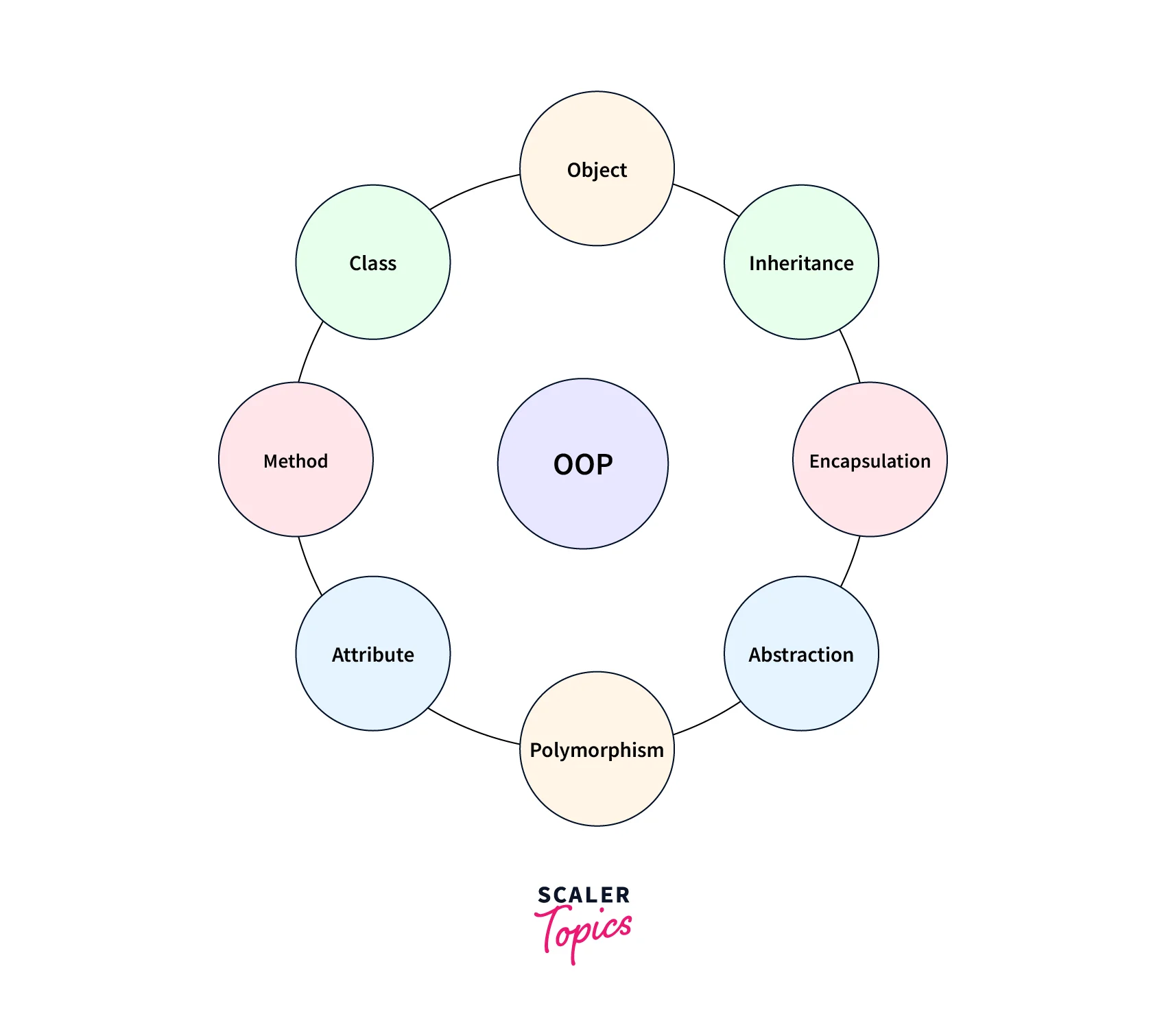Advantages and Disadvantages of OOP
Overview
Object-Oriented Programming (OOP) has become a game-changing method in the field of software development, offering a plethora of benefits. Because of its special qualities, developers may write incredibly flexible, reliable programs. OOP encourages modularity and reusability by enclosing data and methods into objects, making code simpler to maintain and develop. Building hierarchical structures is made possible through inheritance and polymorphism, which improves code organization and encourages code reuse. There are numerous OOPS advantages. OOP gives developers the tools they need to create scalable, adaptive, and user-friendly systems that withstand the test of time, thanks to its emphasis on abstraction and encapsulation.
Introduction to OOP
Before learning about the OOPS advantages. Let us learn about OOP.
Object-Oriented Programming (OOP), a powerful paradigm in software development, has completely changed how we create programs. Encapsulation, inheritance, and polymorphism are the cornerstones of OOP, which gives developers a systematic, modular approach to problem-solving.
OOP considers data and functions as objects, which are fundamentally independent entities. These elements serve as a program's building blocks and stand in for actual things or vague ideas. Data security and restricted access are made possible through encapsulation, which enables data grouping and functions within an object. This modular approach encourages code reuse while minimizing duplication and boosting productivity in software development.

Inheritance is one of the major benefits of OOP. Through inheritance, objects can take on the traits and actions of other objects to create a hierarchy. This idea promotes code reuse as common characteristics, and methods may be declared in a base class and inherited by derived classes. Inheritance improves code organization, makes maintenance easier, and makes it easier to integrate changes across an application.
Polymorphism, which permits objects to exhibit many forms or behaviors depending on the context, is another benefit of OOP. As a result of polymorphism, developers can create flexible, extensible programs that can manage a wide range of object kinds. This dynamic feature encourages code scalability and adaptability, making handling upcoming system modifications or additions simpler.
Furthermore, OOP encourages modularity and abstraction, making it easier to break down complex issues into more manageable parts. This modular approach facilitates collaboration among developers working on various components of an application, makes code maintenance easier, and makes code more readable. OOP also improves data security and lowers the chance of data corruption by enclosing data and behavior within objects.
Top Advantages of OOP
Let us now look at the various OOPS advantages.
- Modularity: OOP divides complex systems into smaller components, making the codebase easier to comprehend, create, and maintain.
- Reusability: Inheritance allows code reuse, improving code quality and saving time.
- Encapsulation: Protects data integrity and privacy by restricting direct access and allowing controlled access through methods.
- Flexibility and Scalability: OOP enables easy addition and modification of features without impacting the entire codebase.
- Code Organization: OOP promotes a structured approach, enhancing collaboration and code readability.
- Code Maintenance: Changes and bug fixes can be made to specific objects or classes without affecting other parts of the system, reducing errors and improving debugging.
- Code Reusability: OOP encourages the development of reusable code elements, saving time and improving system reliability.
- Better Problem Solving: OOP models real-world systems, allowing developers to create intuitive solutions that closely mimic real-world circumstances.
Disadvantages of OOP
After learning about the OOPS advantages, let us now look at the various disadvantages of OOP.
- Steeper learning curve: OOP introduces complex concepts like classes, objects, inheritance, and polymorphism, making it harder for new programmers to grasp and apply them effectively.
- Increased complexity: OOP's emphasis on modularity and code organization can make larger projects more challenging to understand and maintain.
- Performance overhead: OOP languages often have a performance cost compared to procedural languages due to the additional abstraction layers introduced by objects and encapsulation.
- Dependency management: Inheritance and code reuse in OOP can create interdependencies among classes, making it difficult to manage changes and maintain overall functionality.
- Overuse of inheritance: Improper use of inheritance can lead to complex class hierarchies and tightly coupled classes, making code maintenance and modifications more difficult in the future.
Conclusion
- Object-Oriented Programming (OOP) is a helpful method for software development because it has several important benefits.
- OOP encourages modular design, enabling programmers to divide complicated systems into handle-able and reusable parts known as objects.
- OOP design improves the organization of the code, makes it easier to collaborate, and speeds up development and maintenance.
- OOP protects data and methods from outside intervention and ensures data security by encapsulating them within objects.
- Applications become more reliable and safe due to this abstraction's improved control over data access and manipulation.
- OOP supports polymorphism, which enables the interchangeability of objects belonging to various classes.
- Developers may design more general and adaptable code because of this flexibility, which makes it simple to handle modifications and new requirements.
- The modular architecture, encapsulation, and reuse principles emphasized by OOP greatly enhance the maintainability and scalability of the code.
- The chance of introducing defects decreases, and the application's general stability improves when developers isolate changes to particular objects rather than the entire system.
